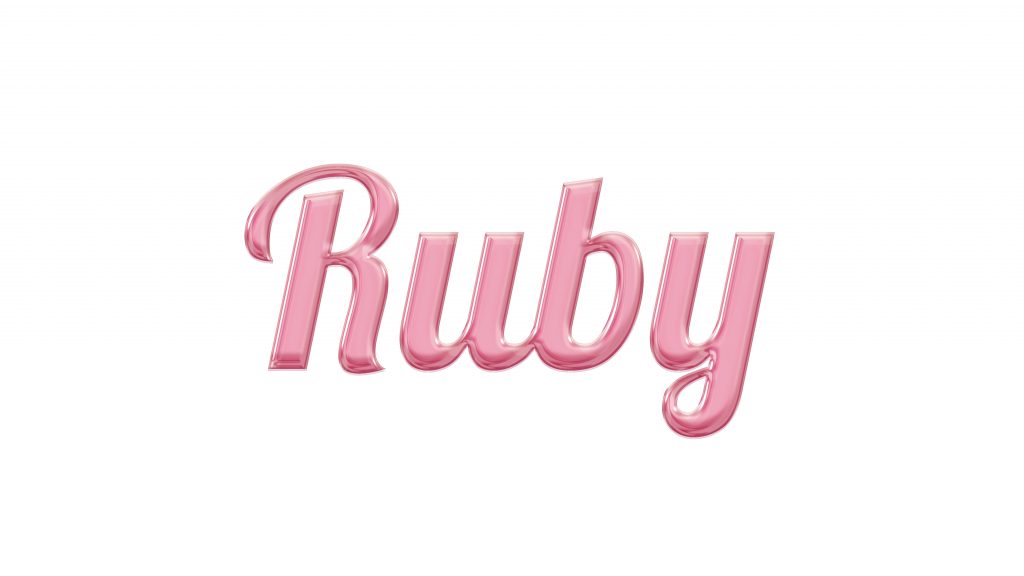
Ruby
A ruby is a pinkish red to blood-red coloured gemstone, a variety of the mineral corundum (aluminium oxide). Ruby is one of the most popular traditional jewelry gems and is very durable. Other varieties of gem-quality corundum are called sapphires. Ruby is one of the traditional cardinal gems, alongside amethyst, sapphire, emerald, and diamond. The word ruby comes from ruber, Latin for red. The colour of a ruby is due to the element chromium.
The quality of a ruby is determined by its colour, cut, and clarity, which, along with carat weight, affect its value. The brightest and most valuable shade of red, called blood-red or pigeon blood, commands a large premium over other rubies of similar quality. After colour follows clarity: similar to diamonds, a clear stone will command a premium, but a ruby without any needle-like rutile inclusions may indicate that the stone has been treated. Ruby is the traditional birthstone for July and is usually pinker than garnet, although some rhodolite garnets have a similar pinkish hue to most rubies. The world’s most valuable ruby to be sold at auction is the Sunrise Ruby.
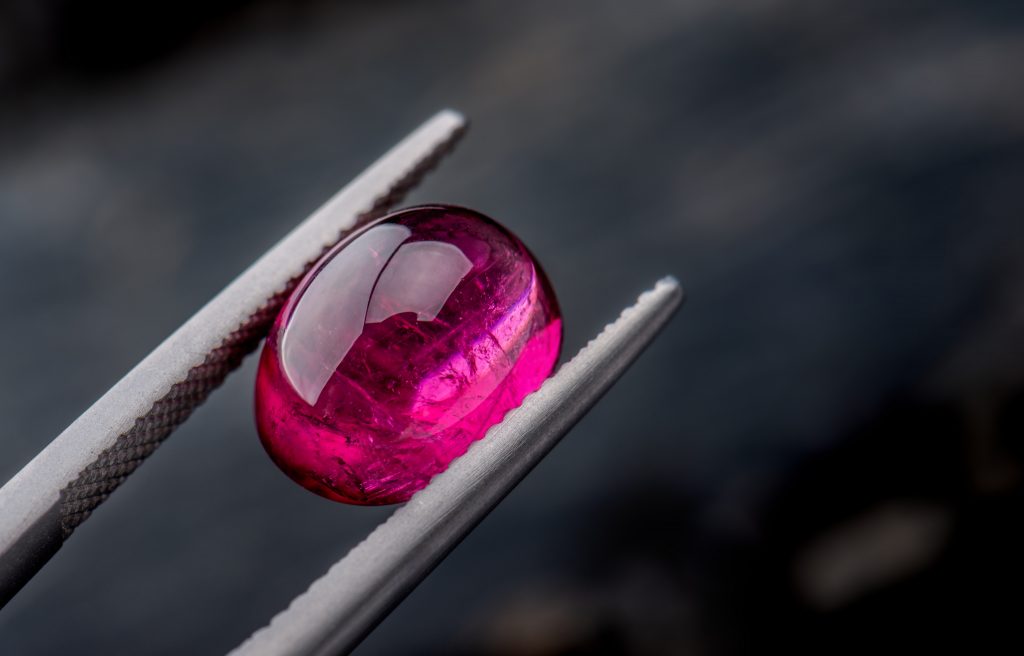
Physical properties
Rubies have a hardness of 9.0 on the Mohs scale of mineral hardness. Among the natural gems, only moissanite and diamond are harder, with diamond having a Mohs hardness of 10.0 and moissanite falling somewhere in between corundum (ruby) and diamond in hardness. Sapphire, ruby, and pure corundum are α-alumina, the most stable form of Al2O3, in which 3 electrons leave each aluminium ionto join the regular octahedral group of six nearby O2− ions; in pure corundum this leaves all of the aluminium ions with a very stable configuration of no unpaired electrons or unfilled energy levels, and the crystal is perfectly colourless, and transparent except for flaws.
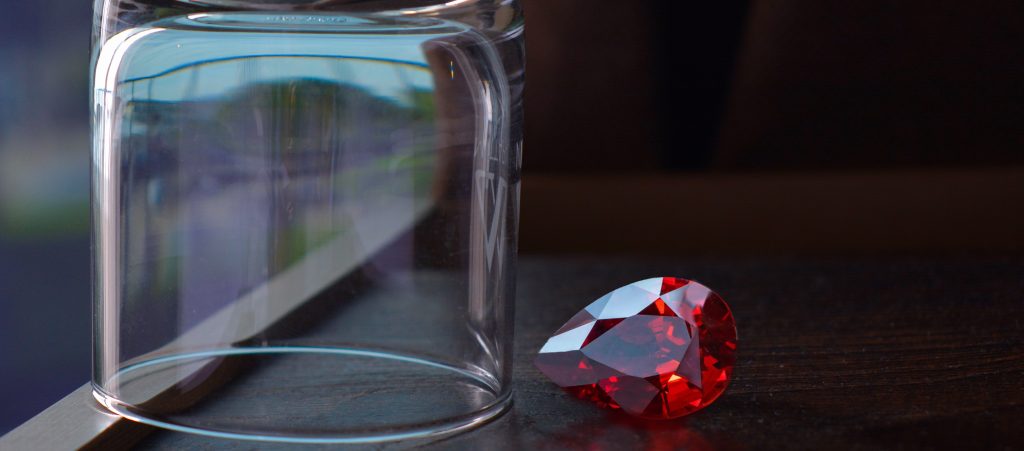
Colour
In the evaluation of coloured gemstones, colour is the most important factor. Colour divides into three components: hue, saturation and tone. Hue refers to colour as we normally use the term. Transparent gemstones occur in the pure spectral hues of red, orange, yellow, green, blue, violet. In nature, there are rarely pure hues, so when speaking of the hue of a gemstone, we speak of primary and secondary and sometimes tertiary hues. Ruby is defined to be red. All other hues of the gem species corundum are called sapphire. Ruby may exhibit a range of secondary hues, including orange, purple, violet, and pink.
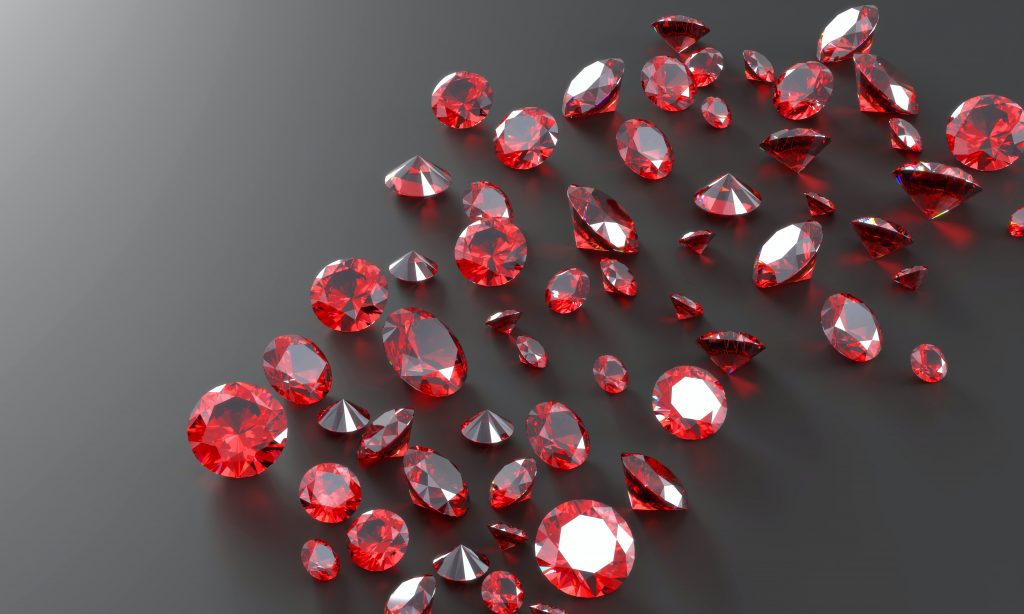
Types of Rubies
- Burmese rubies. Rubies from Burma, now Myanmar, are commonly regarded as some of the world’s most desirable. Burmese rubies have a deep red colour that stands out and can look particularly special. In this 2017 article, National Jeweler Senior Editor Brecken Branstrator outlines 5 interestting facts and “Things to Know” about Burmese rubies.
- Thai rubies. Thai rubies have a deeper but less intense colour than Burmese rubies and are typically considered second in quality. You’ll typically find a higher level of chromium and iron in these rubies, which contributes to their unique colour.
- African rubies. Rubies from African countries such as Kenya and Mozambique have a dark red or red-purple colour. Dark red African rubies are popular and desirable thanks to their rich, unique colouration.
- Pigeon Blood rubies. Rubies with a “pigeon blood” colour are particularly desirable and valuable. These rubies have a bright red hue with a mild purple tint. Viewed under light, they appear deep red in colour.
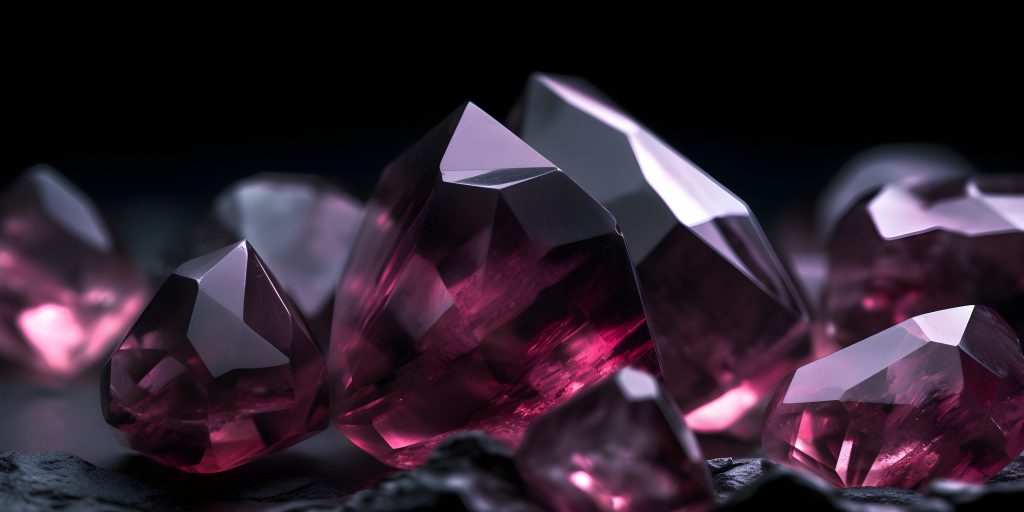
Ruby Quality Grading Factors
Ruby: Colour-As with emeralds, the most important factor when evaluating a ruby is its colour. The deeper, and more intense the colour, the more desirable the ruby. The best ruby colour is typically thought of as a deep, vivid red. However, rubies can look stunning in other colours, such as pink or brown-red.
RUBY TONES-The tone of a ruby’s colour refers to how light or dark the shade of red is, with most good quality rubies falling somewhere between medium and medium dark tone. If a ruby’s colour is too dark, it’s difficult to make out the colour. If it’s too light, the colour will be too faint.
RUBY SATURATIONS-This brings us to our last colour criterion, saturation. Saturation refers to the ruby’s depth of colour, or how intense the colour is. The more intense the colour, the more precious we consider the ruby; a well-saturated ruby will most likely have either “strong” or “vivid” colour saturation.
Ruby: Clarity-Clarity refers to the number, size, colour, location, and quality of imperfections in the ruby, which are known as inclusions. When a gemologist measures the clarity of a diamond, they use 10x magnification to get a super-magnified view of the inside of the stone.
Ruby: Cut-A ruby’s cut refers to how the stone is faceted, its dimensions, and overall symmetry. Unlike with diamonds, rubies are not graded on cut quality. This is because the cut of a ruby is much less of an important factor to consider than its colour and clarity.
Ruby: Carat-Finally, let’s consider the ruby’s carat weight. As you’ve probably already guessed, the heavier the carat weight of the ruby, the bigger the price tag. Because larger gemstones are rarer than smaller gemstones, you’ll pay more for a larger ruby based on the laws of supply and demand.
